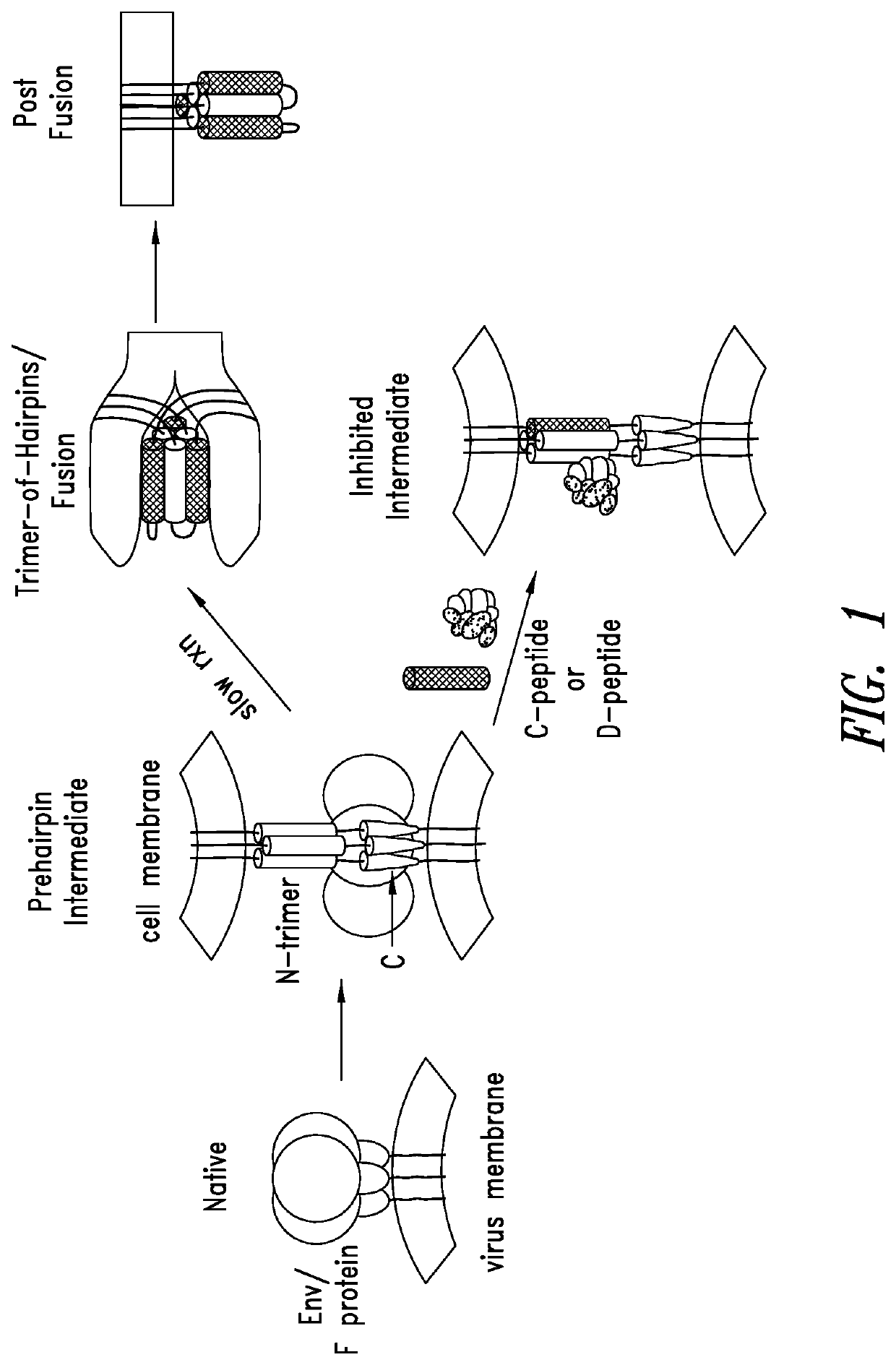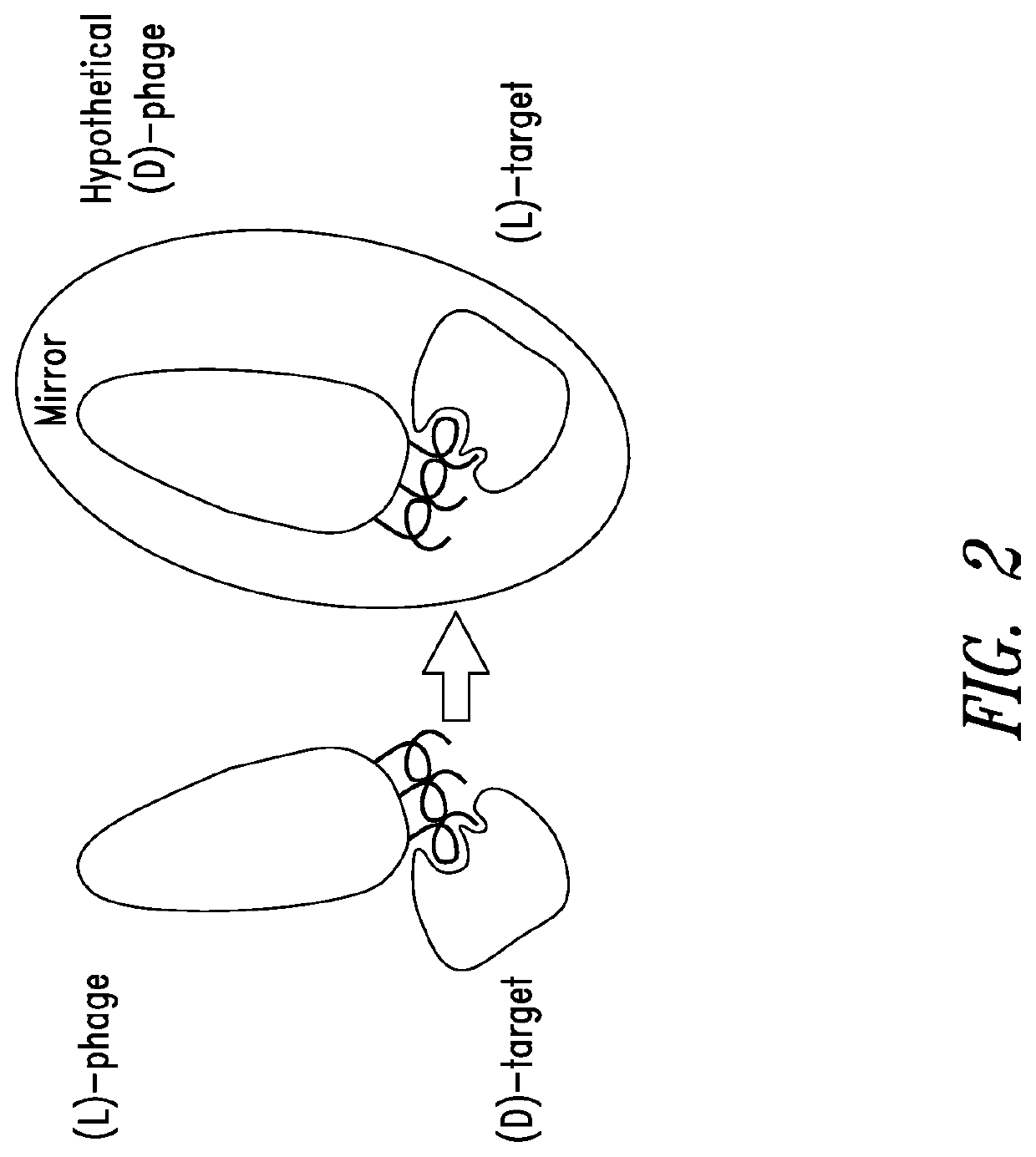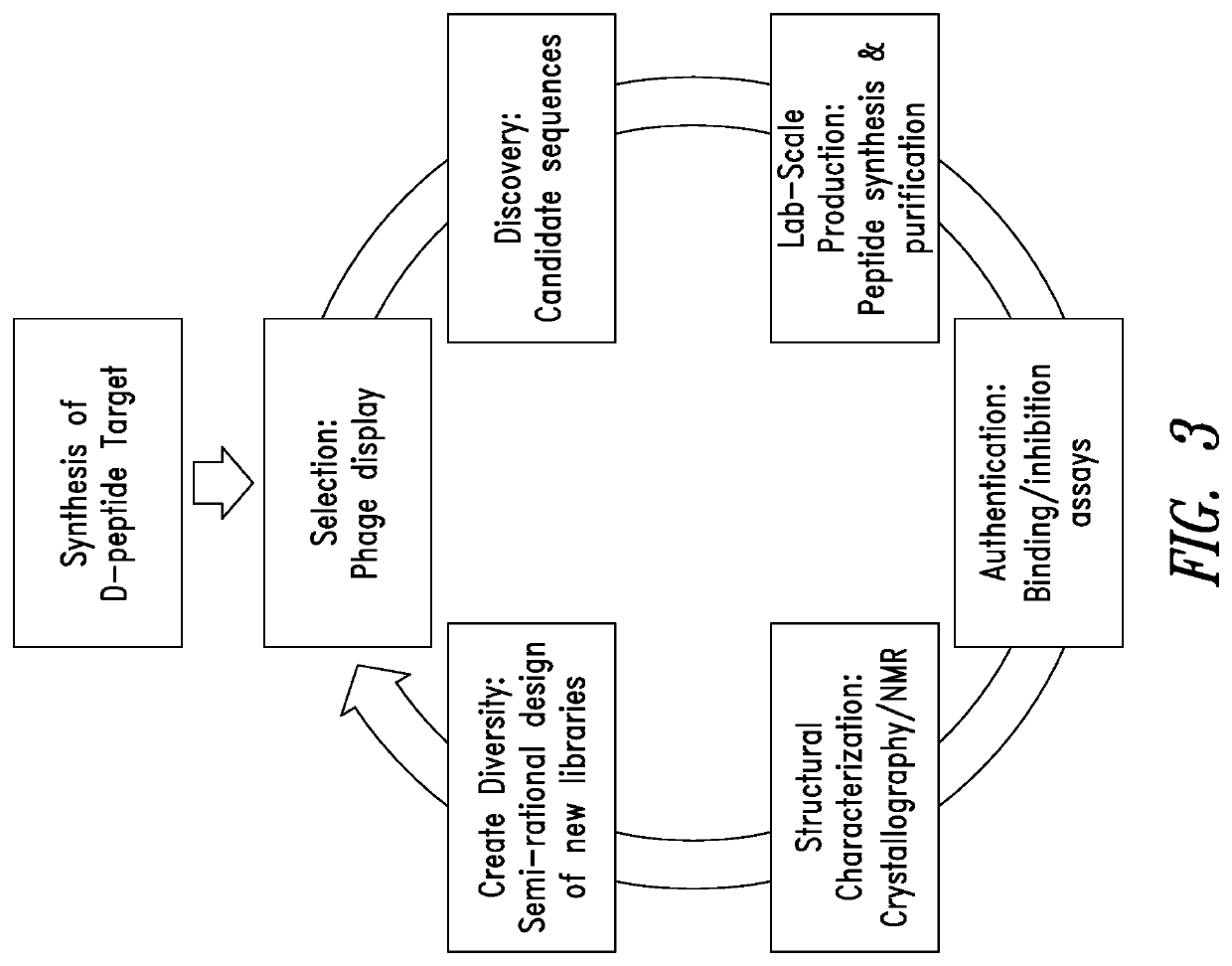Compositions and methods related to inhibition of respiratory syncytial virus entry
a technology of respiratory syncytial virus and composition method, which is applied in the direction of instruments, peptides/protein ingredients, peptides, etc., can solve the problems of limited treatment, no vaccine or safe and effective rsv treatment, and significant morbidity and mortality of rsv in the elderly
- Summary
- Abstract
- Description
- Claims
- Application Information
AI Technical Summary
Benefits of technology
Problems solved by technology
Method used
Image
Examples
example 1
RSV N-Trimer Sequence is Highly Conserved
[0273]The fact that RSV C-peptides inhibit membrane fusion validates the N-trimer as an exposed and vulnerable site on the F protein during entry. However, very little sequence information has been available for the full N-trimer to verify if the target was highly conserved across primary RSV isolates (which are classified into two antigenic groups, RSV-A and RSV-B). Therefore, the F gene from nasal aspirates from 65 patients with confirmed RSV infections admitted to a local hospital during 2007-2012 (38 cases of RSV-A and 27 cases of RSV-B) was sequenced. Viral RNA was extracted and sequenced using various primer sets for the F gene. When compared to the archetype A2 strain, only a single difference in one isolate of the RSV-A subset was found in the 48-residue N-trimer groove region (see, FIG. 4). The RSV-B N-trimer groove was also highly conserved with four single amino acid differences in distinct isolates (see, FIG. 4). After these prima...
example 2
Design and Validation of N-Trimer Mimics
[0274]The high-resolution structure of the RSV trimer-of-hairpins as shown in FIG. 5 shows a hydrophobic pocket near the base of the N-trimer in orange (Zhao et al., 2000, Proc. Natl. Acad. Sci. USA 97:14172-7). This region, analogous to the hydrophobic pocket on the N-trimer of HIV gp41 to which PIE12 D-peptide trimer binds, presents a large, conserved surface area for inhibitor binding (˜600 Å2) and is an attractive inhibitory target. Residues that differ between RSV-A and RSV-B subtypes are shown in gray (see, FIG. 5).
[0275]Peptides corresponding to the N-trimer regions of viral membrane fusion proteins aggregate when produced in isolation due to its relatively hydrophobic composition (Eckert & Kim, 2001, Proc. Natl. Acad. Sci. USA 98:11187-92). To solve this problem and produce a soluble drug-screening target that presents the pocket as a trimer as it appears in vivo during viral entry, N-trimer mimics (also referred to as targets) were de...
example 3
Identification of RSV D-Peptide (RSVP) Inhibitors of RSV Entry Using Mirror-Image Phage Display
[0279]Using D-versions of N-trimer mimics IZN45 and IZN21 as targets, mirror-image phage display library screening was performed to identify peptides that bind to the N-trimer groove and inhibit RSV entry (see, Table 2). Two commercially available linear peptide phage display libraries (NEB and Creative Biolabs) of the format X12 and X16 (12 and 16 consecutive randomized amino acids where X is any X any amino acid or X is any amino acid except Cys, respectively), and a disulfide-constrained (circularized) library of the form CX10C (see, Eckert et al., 1999, Cell 99:103-115; Welch et al., 2007, Proc. Natl Acad. Sci. USA 104:16828-16833; U.S. Patent Publication 2010 / 0184663, each of which is incorporated by reference in its entirety). The X16 and CX10C library oligonucleotides were made using a mix of 19 trimer phosphoramidites (Glen Research) that encodes all amino acids except Cys while al...
PUM
| Property | Measurement | Unit |
|---|---|---|
| Molar density | aaaaa | aaaaa |
| Molar density | aaaaa | aaaaa |
| Molar density | aaaaa | aaaaa |
Abstract
Description
Claims
Application Information
 Login to View More
Login to View More - R&D
- Intellectual Property
- Life Sciences
- Materials
- Tech Scout
- Unparalleled Data Quality
- Higher Quality Content
- 60% Fewer Hallucinations
Browse by: Latest US Patents, China's latest patents, Technical Efficacy Thesaurus, Application Domain, Technology Topic, Popular Technical Reports.
© 2025 PatSnap. All rights reserved.Legal|Privacy policy|Modern Slavery Act Transparency Statement|Sitemap|About US| Contact US: help@patsnap.com



